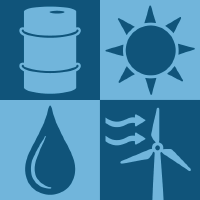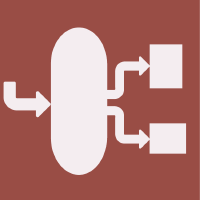Topic Editors


Advances in Coal Mine Disaster Prevention Technology

Topic Information
Dear Colleagues,
China’s natural energy reserves are characterized by “rich coal, poor oil, and little gas”. This unique foundation has established that coal will be as predominant an energy source for the nation in the foreseeable future as it is now. According to a forecast made by the Chinese Academy of Engineering, the proportion of coal consumption to total energy consumption will remain at 50% by 2050. In addition, under the dual carbon targets of “carbon peaking and carbon neutrality”, coal carbon still needs to continue to play its crucial role as a “ballast” in the energy system, with energy security being the highest priority. However, with the development of China's shallow coal resources, coal sources are becoming increasingly depleted, and deep mining has become a strategic demand for energy in China. As deeper layers of coal seams are accessed to facilitate coal mining, these seams show increasingly obvious characteristics of high geo-stress, strong gas adsorption, and low permeability, resulting in significant changes in the mining environment. Under the influence of mining disturbances, coal and gas outburst and rock burst disasters are becoming increasingly serious threats. The intertwining nature of these threats has contributed to the complexity and intricacy disaster mechanisms, making disaster prevention and control increasingly difficult. Therefore, this research topic endeavor is concentrated on the complex issues surrounding deep coal resource extraction, specifically in relation to coal and gas outbursts, rock bursts, and multifaceted coal–rock dynamic disasters. This research topic aims to elucidate the challenges of disaster prevention, and to propose innovative methods that will reduce the incidence of disasters in the civil and coal mine domains, among others. This research topic seeks to address a multitude of areas within civil and mining engineering fields, aiming at advancing a sustainable global landscape. We welcome both original research and review articles, including but not limited to the following topics:
- Coal and gas outburst prevention technology;
- Rock burst prevention methods;
- Regional disaster risk assessment;
- Risk assessments of the systematic classification of natural hazards;
- Disaster risk reduction frameworks;
- Methodologies for natural hazard warning alerts;
- Coal mine ventilation;
- Management of natural disaster reduction;
- Disaster risk reduction models;
- Gas extraction methods and materials.
Dr. Xuelong Li
Dr. Jia Lin
Dr. Zhibo Zhang
Dr. Baolin Li
Topic Editors
Keywords
- coal and gas outburst prevention technology
- rock burst prevention methods
- regional disaster risk assessment
- risk assessments of the systematic classification of natural hazards
- disaster risk reduction frameworks
- methodologies for natural hazard warning alerts
- coal mine ventilation
- management of natural disaster reduction
- disaster risk reduction models
- gas extraction methods and materials
Participating Journals
| Journal Name | Impact Factor | CiteScore | Launched Year | First Decision (median) | APC | |
|---|---|---|---|---|---|---|

Energies
|
3.0 | 6.2 | 2008 | 16.8 Days | CHF 2600 | Submit |

Minerals
|
2.2 | 4.1 | 2011 | 18 Days | CHF 2400 | Submit |

Mining
|
- | 2.8 | 2021 | 21.1 Days | CHF 1000 | Submit |

Resources
|
3.6 | 7.2 | 2012 | 26.1 Days | CHF 1600 | Submit |

Sustainability
|
3.3 | 6.8 | 2009 | 19.7 Days | CHF 2400 | Submit |

Processes
|
2.8 | 5.1 | 2013 | 14.9 Days | CHF 2400 | Submit |

MDPI Topics is cooperating with Preprints.org and has built a direct connection between MDPI journals and Preprints.org. Authors are encouraged to enjoy the benefits by posting a preprint at Preprints.org prior to publication:
- Immediately share your ideas ahead of publication and establish your research priority;
- Protect your idea from being stolen with this time-stamped preprint article;
- Enhance the exposure and impact of your research;
- Receive feedback from your peers in advance;
- Have it indexed in Web of Science (Preprint Citation Index), Google Scholar, Crossref, SHARE, PrePubMed, Scilit and Europe PMC.



